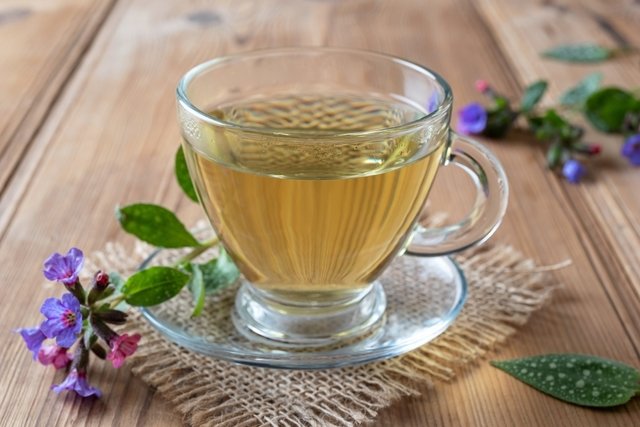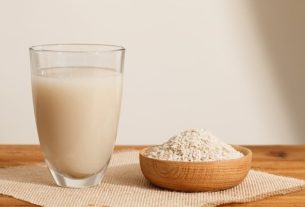Lungwort is a medicinal plant rich in saponins, tannins, phenolic compounds, flavonoids and alkaloids, with anti-inflammatory, expectorant, neuroprotective and healing properties, and is therefore popularly used to assist in the treatment of flu, pulmonary tuberculosis, skin wounds or urinary infections.
The scientific name of lungwort is Pulmonaria officinalisand should not be confused with the Pulmonary lobariawhich despite also being popularly called lungwort and having some similar indications, is a type of moss, with different active substances and other medicinal properties.
Lungwort, also known as lungwort, Jerusalem parsley or bofe herbs, can be purchased at herbalists, health food stores or compounding pharmacies, and should be used under the guidance of a doctor or other health professional who has experience with the use of medicinal plants.

What is it for
Lungwort is popularly indicated for:
- Gripe;
- Fever;
- Sore throat;
- Pharyngitis;
- Hoarseness;
- Asma;
- Bronchitis;
- Pulmonary tuberculosis;
- Cough with phlegm;
- Burns;
- Skin wounds;
- Eczema;
- Bladder or kidney infections;
- Kidney stone;
- Alzheimer’s disease.
Lungwort has anti-inflammatory, antioxidant, antibacterial, neuroprotective, healing and anticoagulant properties, especially due to the presence of pulmonary iosides, hydroxycinnamic acid, phenolic acids, ascorbic acid and flavonoids in its composition.
Although it has many benefits, this medicinal plant should not replace medical treatment or be used without guidance from a doctor or healthcare professional with experience in the use of medicinal plants.
How to make lungwort tea
Lungwort tea should be prepared using the dried leaves of this plant, from which active substances with medicinal properties are extracted.
- Tea for flu: Add 3 teaspoons of dry lungwort to half a cup of boiling water. Let it rest for about 10 to 15 minutes. Then strain, wait for it to cool and drink up to 3 times a day;
- Tea for fever: Add 2 teaspoons of dry lungwort to 1 cup of boiling water. and let it rest for about 10 to 15 minutes. Then strain, wait for it to cool and drink up to 3 times a day.
To increase the expectorant effect of lungwort, you can add a spoonful of honey to the tea, as it helps to reduce inflammation, lubricate the throat, relieve coughs and phlegm. However, honey should not be used by people who are allergic to pollen, propolis or honey.
Lungwort tea can also be used to make compresses and apply to skin with a wound or burn, for example.
Possible side effects
The most common side effects that may arise when using the tea are liver problems, stomach pain, bleeding, skin infection or intoxication, especially when consumed in larger amounts than recommended.
Who shouldn’t use
Lungwort should not be used by children, pregnant or breastfeeding women or people with liver problems.
Furthermore, lungwort tea should not be applied to skin with open or bleeding wounds.
Bibliography
- KRYZANOWSKA-KOWALCZYK, J.; et al. Novel Phenolic Constituents of Pulmonaria officinalis L. LC-MS/MS Comparison of Spring and Autumn Metabolite Profiles. Molecules. 23. 9; 2277, 2018
- NEAGU, E.; et al. Antioxidant activity, acetylcholinesterase and tyrosinase inhibitory potential of Pulmonaria officinalis and Centarium umbellatum extracts. Saudi J Biol Sci. 25. 3; 578–585, 2018

Sign up for our newsletter and stay up to date with exclusive news
that can transform your routine!
Warning: Undefined array key "title" in /home/storelat/public_html/wp-content/plugins/link-whisper-premium/templates/frontend/related-posts.php on line 12
Warning: Undefined array key "title_tag" in /home/storelat/public_html/wp-content/plugins/link-whisper-premium/templates/frontend/related-posts.php on line 13



